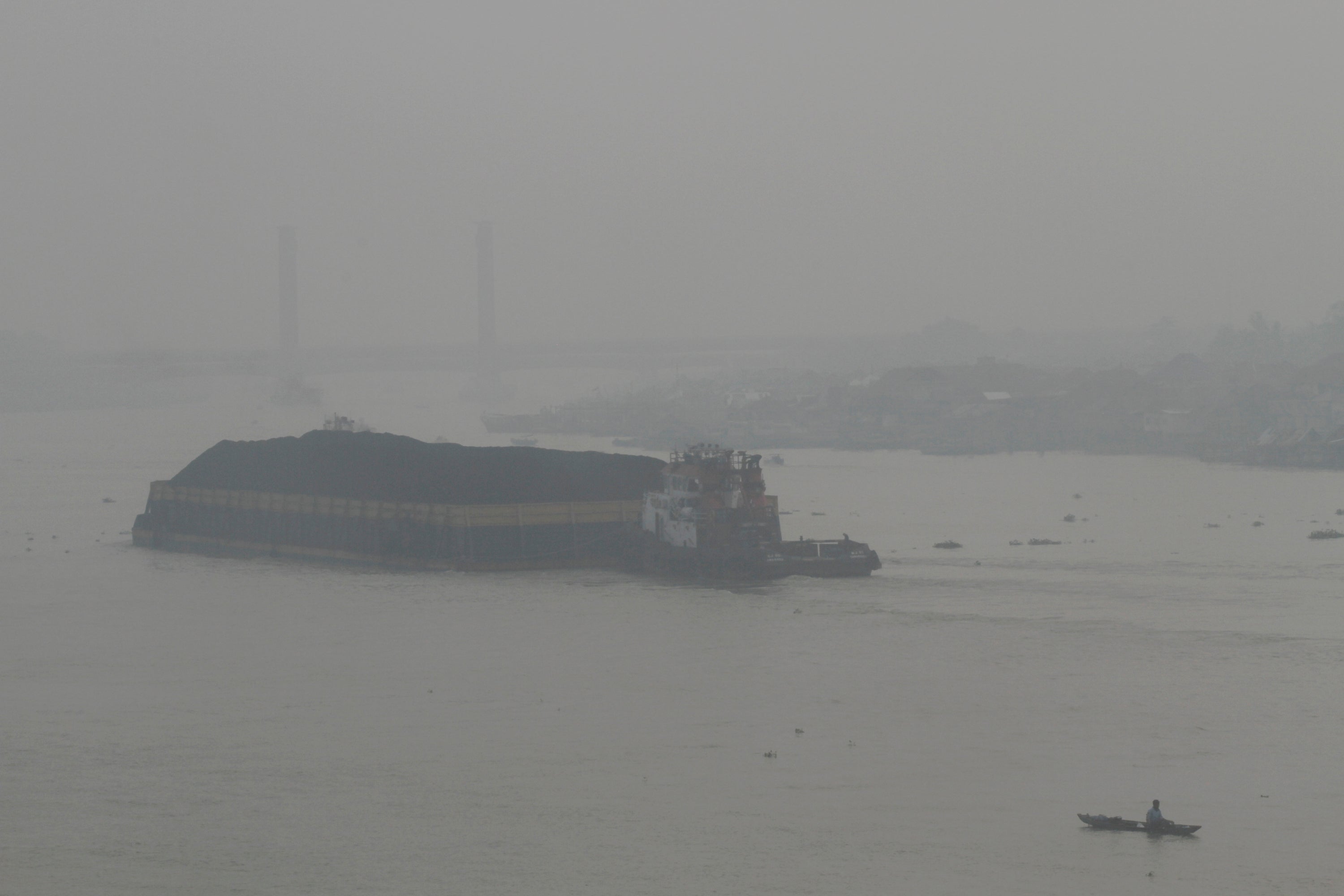Forest fires on Indonesia’s Sumatra island cause hazy skies and prompt work from home
More than 300 forest and peatland fires on Indonesia’s Sumatra island are causing hazy skies

More than 300 forest and peatland fires on Indonesia's Sumatra island caused hazy skies across the region on Monday, prompting government officials to ask people to work from home.
The military, police and local government were working together to extinguish the fires, which were burning in 316 places across South Sumatra province, but their work was complicated by the extreme dry weather, said Iriansyah, the head of the South Sumatra Disaster Management Agency.
The smoky haze drifted from the fires toward Palembang, the capital of South Palembang province, causing unhealthy air conditions for the area's 1.7 million people.
“There is a high potential for people to suffer from respiratory tract infections, coughing, shortness of breath and eye irritation,” said Iriansyah, who like many Indonesians uses only one name.
The government in South Sumatra last week called on schools to delay their opening time, as the haze tends to decrease during the day. But on Monday, the schools asked students to attend classes online, as the air quality had worsened and was categorized as “dangerous".
“We are worried as the haze is getting worse in Palembang. Many children are sick and we can only pray that this disaster will pass quickly,” Umi Kalsum, a private sector worker and mother, told The Associated Press on Monday.
Forest and peat fires are an annual problem in Indonesia that strains relations with neighboring countries. Smoke from the fires has blanketed parts of Indonesia, Singapore, Malaysia and southern Thailand. Some parts of Malaysia said they experienced smoke from the Indonesian fires since last week.
Malaysia's Environment Department chief Wan Abdul Latiff Wan Jaffar last week said the return of smog in some parts of the country was due to hundreds of forest fires in Indonesia.

“Overall, air quality in the country has deteriorated,” he said in a statement. “Forest fires that occur in the southern part of Sumatra and the central and southern parts of Kalimantan, Indonesia have caused haze to cross borders.”
But Siti Nurbaya Bakar, Indonesia's Environment and Forestry Minister, said in a statement on Monday there has been no transboundary haze from Indonesia to Malaysia.
Satellite data from Indonesia’s Meteorology, Climatology and Geophysics Agency shows that the haze in Indonesia was in several areas in Sumatra and Borneo islands. Wind direction in Indonesia is generally from southeast to northwest-northeast.
“We continue to follow developments and there is no transboundary haze to Malaysia,” she said.
She added that authorities are working on the ground and in the air to put out the fires in South Sumatra, Central Kalimantan and South Kalimantan provinces, including some areas in Java.
Indonesia’s National Disaster Management Agency in September said that there are six provinces in Indonesia where forest and peatland fires are most common, including South Sumatra province, where a big peatland fire burned for days in August.



Bookmark popover
Removed from bookmarks